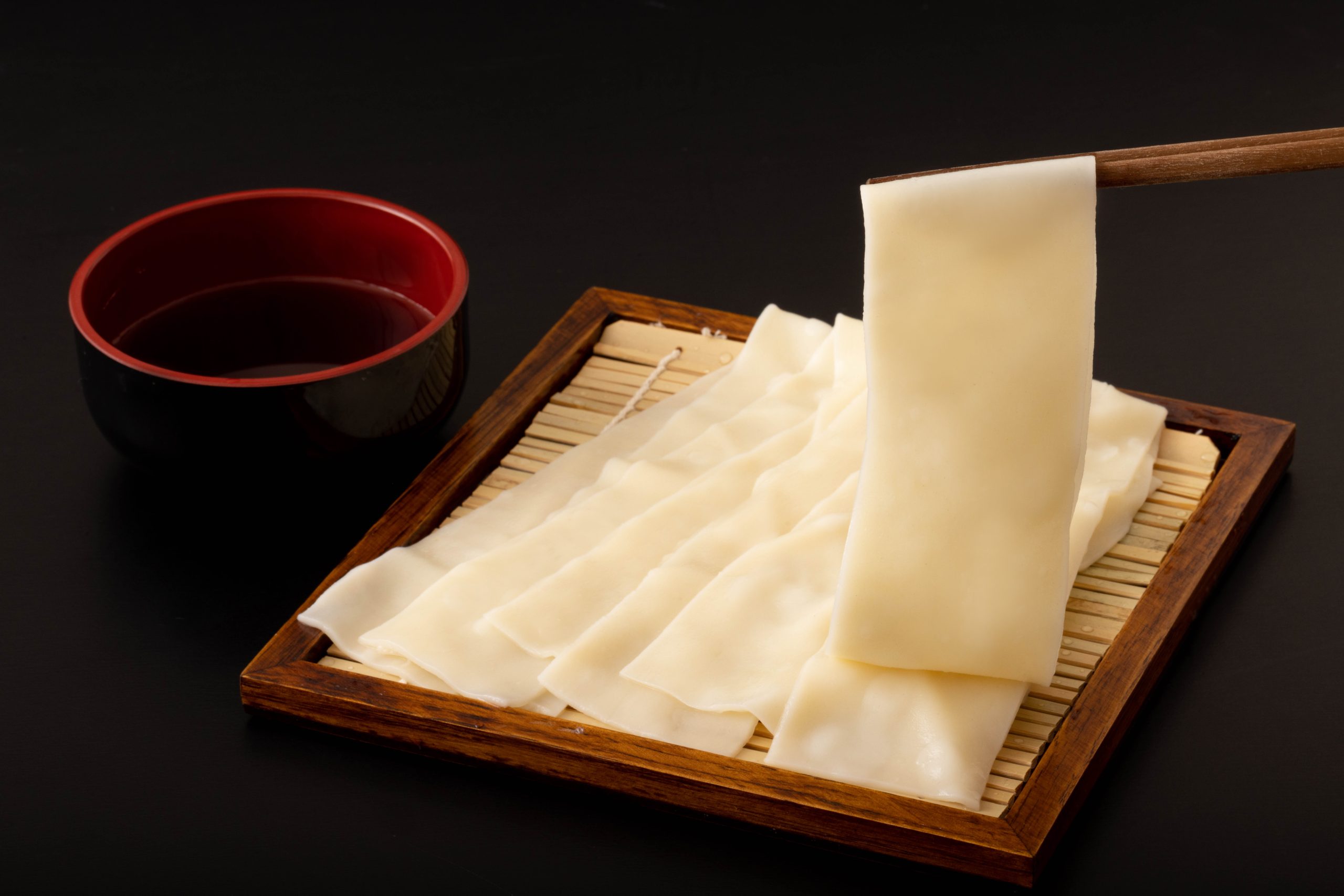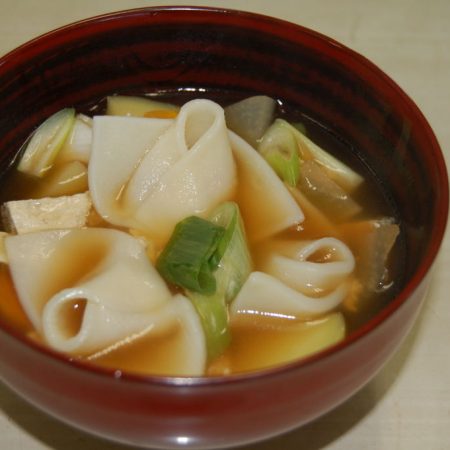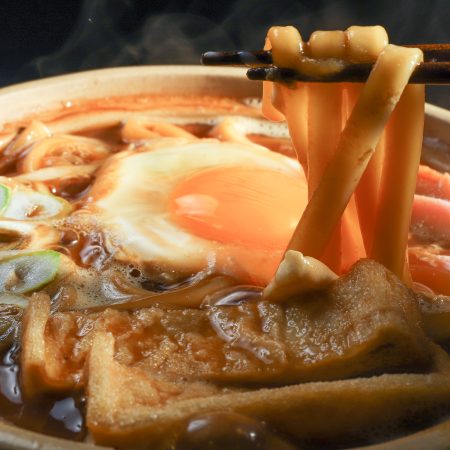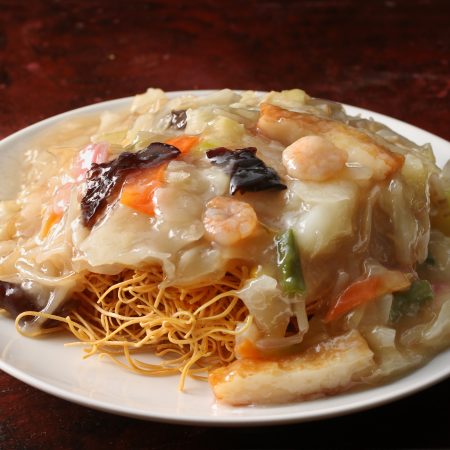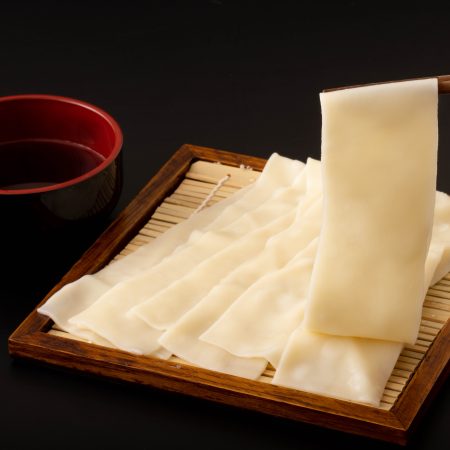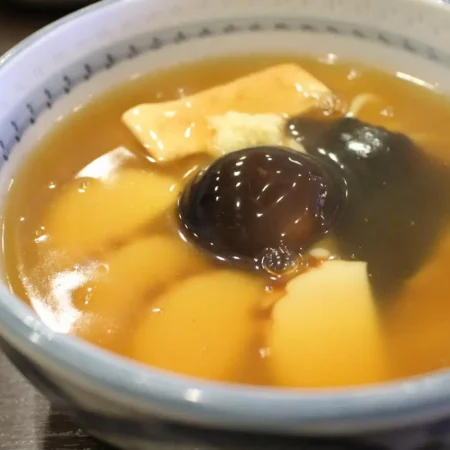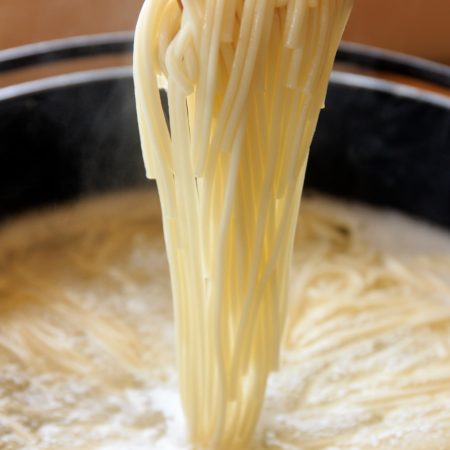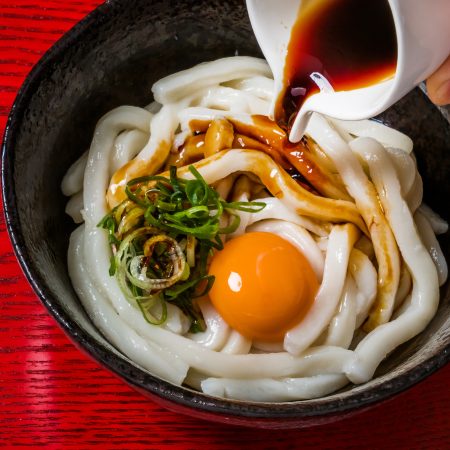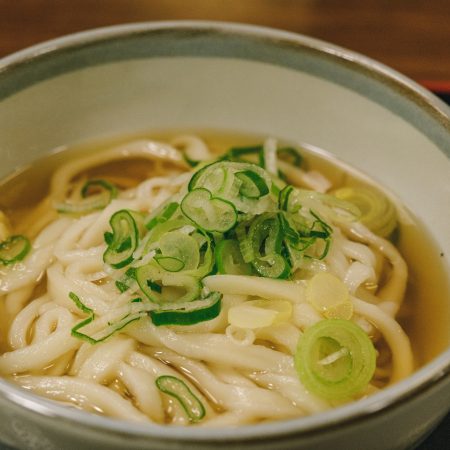Himokawa Udon is a wide, thin Japanese noodle and a dish using such noodle. Unlike regular udon, it is also called hirauchi udon because of its flat shape. The width of the noodles varies from 5.0 mm to more than 15 cm. Especially in Kiryu City, Gunma Prefecture, extremely wide or long noodles are known as part of the local cuisine and are a popular specialty. Because these noodles are stretched thin, they are longer than udon noodles, and because they are thin and flat, they require less boiling time. Water, flour, and salt are used as ingredients, and they are made with the same basic ingredients as udon, but the noodles may break or snap in the middle as they are stretched flat. These noodles are very weak compared to udon and have a smooth, smooth surface.
Hibikawa udon is a well-known local dish of the Kiryu region of Gunma Prefecture, which is also famous for its wheat production. It is said that the origin of Hizukawa udon originally came from the Imokawa region of Aichi Prefecture. It is also said that Imokawa udon, which is considered to be the root of kishimen, is the origin of string udon. Many stores do not exist today, and Imokawa udon is one of the few examples that remain.
In the Kiryu area of Gunma Prefecture, these wide noodles are used in a local dish called ochirikomi, which varies in width from 1.5 cm to over 10 cm, depending on the restaurant. While the noodles are wide, their thickness is only about 1 mm, making them characteristically thin. Hibikawa udon can be enjoyed in a variety of styles, ranging from cold saru udon to hot udon. Some noodles, especially those with a width of more than 10 cm, are popular for their unique texture and beautiful presentation.
The string noodles are characterized by their slippery texture, which makes them refreshing even on hot days. The thinness of these noodles is what makes them so thirst-quenching, and FURUKAWA in particular employs a unique cooking method in which the noodles are tightened in ice water in order to give them a firm texture. The noodles are characterized by their thinness and are carefully folded and served one by one, a style known as "herihimokawa," which is beautiful to look at and has been highly praised by blogs and word-of-mouth. Hishimokawa udon was originally a winter dish, but now it is also a beloved summer staple.

